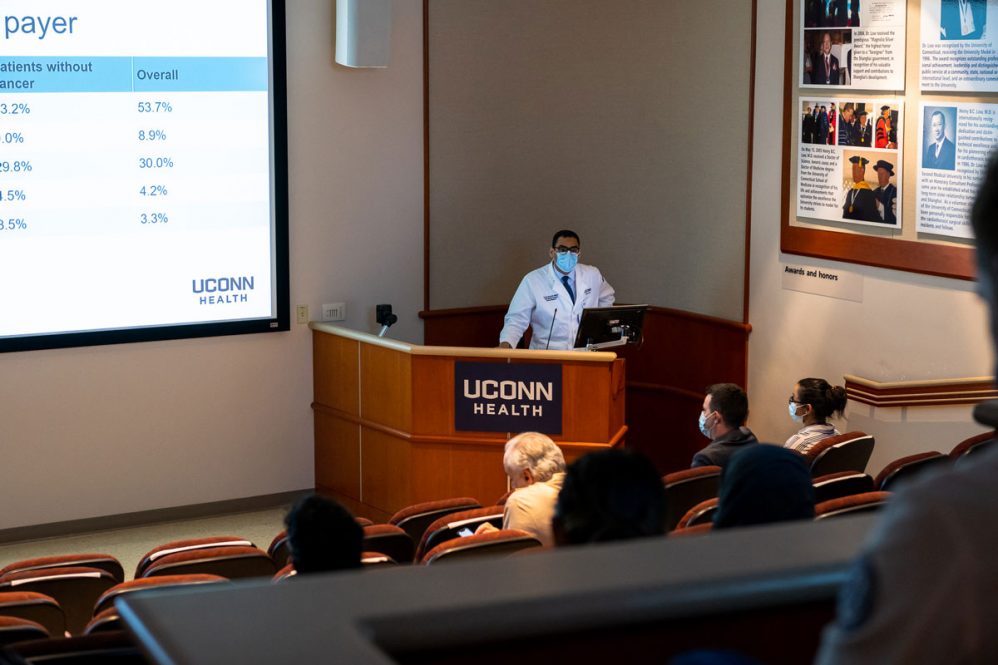The residency phase of a physician’s career historically is associated with very long hours in a clinical setting, and perhaps not so much with shaping the next generation of academics and researchers.
“Having an intellectual curiosity drives everybody. As the teaching improves, the experience for the trainees improves.” — Dr. Robert Nardino, UConn Internal Medicine Residency Program director
But the UConn School of Medicine’s internal residency program is placing an increased emphasis on opening scholarly and research paths for physicians as it prepares them for the next steps in their career – which could include an eventual return to UConn Health as faculty to perpetuate the academic, research, and clinical missions for the next generation.
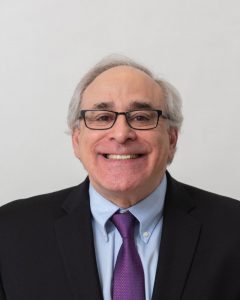
“Strengthening research and academics improves residency training, making better doctors,” says Dr. Justin Radolf, director of research in the Department of Medicine. “A lot of our resources, a lot of our efforts go into training our residents, and the better we do, the better we are. This program, in my view, is a step up for us in terms of trying to meet that bar.”
Two years ago the residency program introduced a clinical research track.
“The purpose is to both improve research training experiences for the residents, but also just to increase research in the Department of Medicine,” says Dr. Eric Mortensen, chief of the Division of General Internal Medicine.
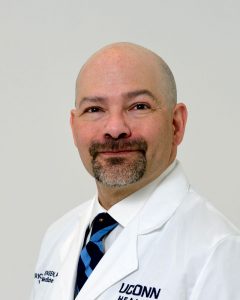
“We certainly have made a concerted effort to have our residents advance the type of scholarly activity that they work on, to involve them in the kind of projects that add to the dissemination of knowledge,” says Dr. Robert Nardino, director of the UConn Internal Medicine Residency Program. “Having an intellectual curiosity drives everybody. As the teaching improves, the experience for the trainees improves.”
For example, when a resident mentors a medical student, “It helps the resident, it helps the student, and it helps me,” Mortensen says. “The residents are helping us push the science forward, and also really helping us educate the medical students.”
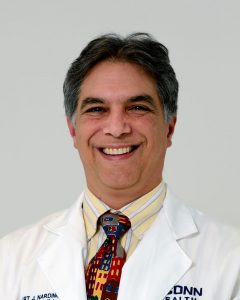
Overlapping with, but separate from, the clinical research track is the opportunity to submit abstracts for an annual Resident Research Day. The second one just took place June 10, when three residents presented their winning abstracts at the Department of Medicine Grand Rounds.
One of them is Dr. Matthew Hadfield, in his third year, bound for a hematology-oncology fellowship at Brown University.
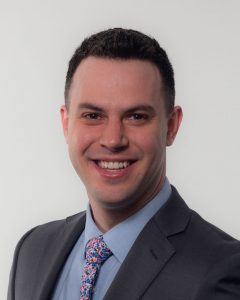
“The UConn Internal Medicine residency afforded me unique opportunities to become involved in impactful research projects from the very first day,” Hadfield says. “The project I was fortunate enough to be a part of was a cross collaboration between the UConn Department of Mechanical Engineering and the New England Sickle Cell Institute based at UConn Health. The experience really highlighted how easy it is to become involved with many different opportunities thanks to the high level of integration across all disciplines and campuses. I was easily able to connect with mentors who helped me grow as both a clinician and a researcher.”
In addition to enhancing the experience of the residents of today, the culture of academics and research during residency training is helping the program attract more prospective residents of tomorrow.
“It’s flourishing,” Radolf says. “We’re really getting good applicants. People come here because of the clinical research track. And it’s competitive. We have to turn people away.”
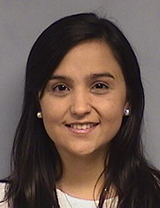
The second resident who presented at Resident Research Day was Dr. Ana Becerra, who’s in Year Two and interested in pursuing a career in cardiology, with an eye toward vascular diseases.
“The clinical research track has shown me a different perspective of medicine,” Becerra says. “Even though I have always been interested in research, through the curriculum I was able to see how much research can impact people’s lives. It has been very inspiring.”
The third Resident Research Day presenter was Dr. Khalid Shalaby, a third-year resident who soon will be a UConn John Dempsey Hospital chief resident.
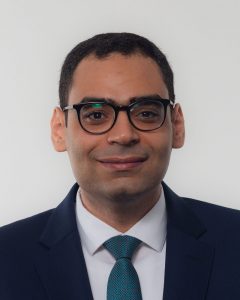
“The UConn Internal Medicine Residency Program epitomizes the balance between rigorous clinical training and scholarly opportunities for residents,” Shalaby says. “The diversity of residents and faculty is unparalleled. It is always comforting and encouraging to train in an institution that is consistently rooting for my success and provide mentorship as I aspire to become a hematologist/oncologist.”
Looking longer-term, a richer residency experience can elevate the program’s reputation, with current and former residents returning to join the faculty, recommending the program to others, or both.
“As an attending, often times people ask your opinion on where they should go for training, and if you have a very good feeling about what you learned, you’re going to want to direct people back,” Radolf says. “If you can say to people who you know are research-oriented or thinking academically that ‘UConn’s got opportunities and you should really look at it,’ it makes a big difference.”
